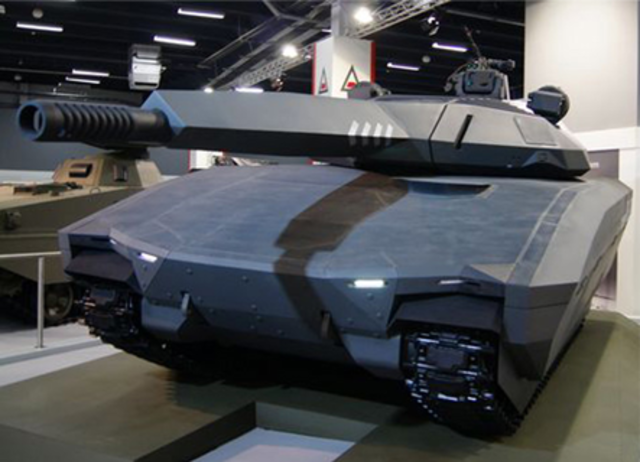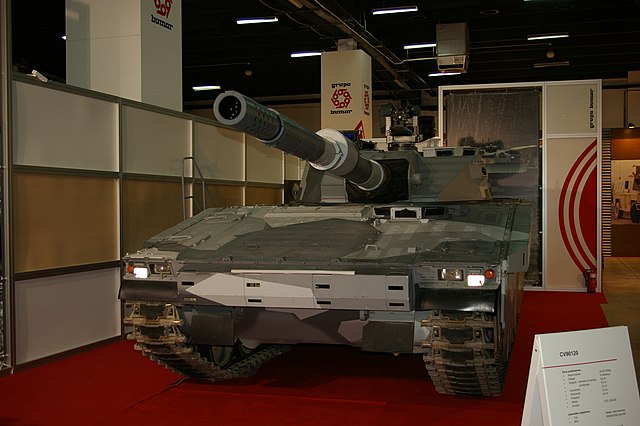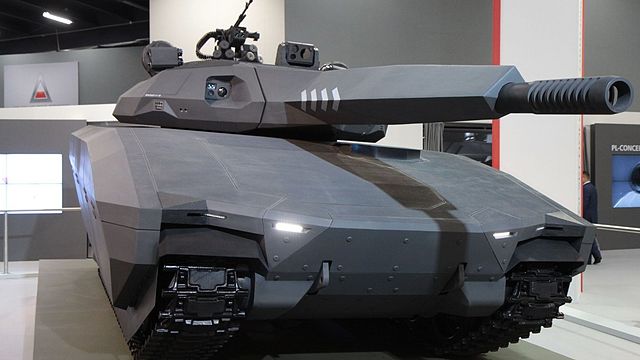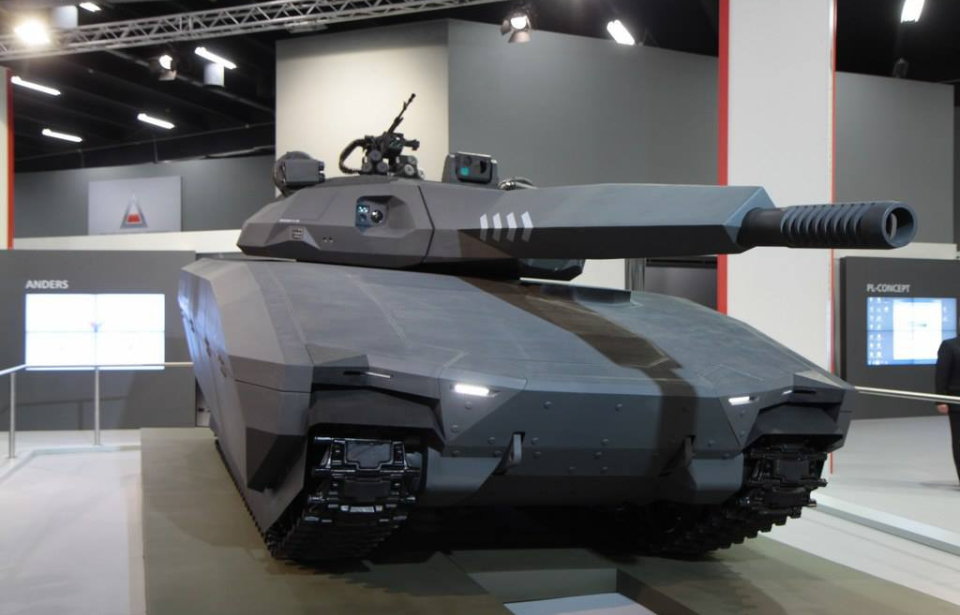Countries are always looking to equip their militaries with the latest equipment, whether that be new firearms or vehicles. In 2013, Poland wowed everyone with its PL-01, a concept direct fire support combat vehicle. It was intended to enter production soon after, with an aim of hitting the battlefield toward the end of the 2010s. Unfortunately, that never happened, and its future (and current state) remain unknown.
Development and unveiling

The PL-01 was developed by Polish company OBRUM, with support from the United Kingdom’s BAE Systems. It’s based on the CV90120-T, an export version of the Swedish Combat Vehicle 90. A direct fire support combat vehicle, it was designed with a similar layout to other modern main battle tanks (MBTs), and has the ability to also serve as a mine clearance vehicle, a tool for armored vehicle repair and as a command vehicle.
The PL-01 was officially unveiled to the public during the 2013 International Defense Industry Exhibition in Kielce, Poland. While there were rumors it could enter service as early as 2018, not a single PL-01 has left the factory. While some sources claimed the stealth tank could be delivered at some point in 2022, this never happened.
PL-01 specs

As aforementioned, the PL-01 features a similar layout to other MBTs, in that the driver is seated at the front of the hull, along with the gunner and commander. An additional four infantrymen can be seated in the rear, all of which are provided with special seating to lessen the effects of nearby explosions.
The chassis is based on the Combat Vehicle 90 and has a seven-wheel-based suspension. There’s an unmanned turret mounted in the rear, which has an active protection system built into it and two banks of four smoke grenade launchers on either side. There are also fire extinguishing and nuclear, biological and chemical (NBC) protection systems built into the turret and hull.
The PL-01’s 940 horsepower diesel engine and torque converter allow the tank to reach speeds of 43 MPH on paved roads and up to 31 MPH on rough terrain, with a maximum range of between 160 and 310 miles, depending on conditions.
To ensure its crew is protected during combat, the PL-01 features a modular ceramic-aramid shell, along with additional armor panels on the turret and hull. All this means it can withstand explosions with a force equivalent to 10 kg of TNT – eg. landmines and IEDs. The tank can also be covered in reactive material, to protect against more advanced ammunition, including high-explosive anti-tank (HEAT) projectiles.
While the PL-01 has been fitted with a number of systems that other MBTs have – internal radio communications, battlefield management, satellite navigation – its key feature is its ability to camouflage itself. The tank is fitted with external infrared sensors, and it can use its temperature-controlled wafers to make it look like different objects on radar and other detection equipment.
NATO-standard cannon and machine guns

The primary weapon on the PL-01 is its 105 mm or 120 mm cannon, located within the turret at the rear. Featuring an autoloader with the ability to fire six rounds per minute, it’s designed to shoot both conventional and guided anti-tank projectiles. It can carry 45 rounds, 16 of which are stored within the turret.
More from us: Panther KF51: Rheinmetall’s New Main Battle Tank Features a 130 mm Gun
The tank also features a 7.62 UKM-2000C machine gun, and can also be equipped with either an additional 7.62 mm (8,000 rounds) or 12.7 mm one (400 rounds). Militaries can bypass these weapons and, instead, install a 40 mm automatic grenade launcher with a supply of 96 rounds.
